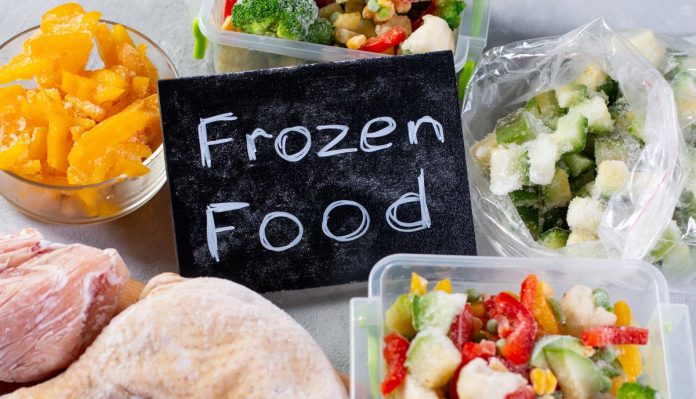Many people like to purchase foods that have been cooked and prepared ahead of time, but aren’t frozen as they want to eat them as soon as possible. However, are these foods still safe to eat after a certain amount of time? According to the U.S. Department of Agriculture, all pre-cooked ready-to-eat foods should be consumed or discarded after four hours at room temperature or one hour when temperatures are above 90 degrees Fahrenheit outside or inside the house where the food was stored.
What Is Non-Frozen Ready To Eat Foods?
Non-frozen ready-to-eat foods are foods that can be eaten without cooking or reheating. This includes things like sandwiches, salads, sushi, and deli meats. These types of foods are often found in grocery store delis, cafeterias, and take-out restaurants. As the name suggests, these items are ready-to-eat. You don’t need to cook them before you consume them. They are also often packaged with a date by which they should be consumed by. The date is usually marked on the packaging or stamped on top of the food item itself. What If They Are Out Of Date?: A common misconception is that all food past its sell by date will become toxic and dangerous to eat. While this is not true for many foods, it does apply to some, such as eggs, cheese, fish and poultry products.
What Are The Risks Of Defrosting Foods In Microwaves?
There are several risks associated with defrosting foods in microwaves. First, uneven heating can cause bacteria to grow. Second, certain chemicals in food can be released when heated, which can be harmful to your health. Third, microwaves can cause changes in the structure of food, which can make it less nutritious. Finally, microwaves can actually cook the food instead of just defrosting it, which can make it tough and unappetizing. For these reasons, most people recommend using an oven or stovetop instead of a microwave to defrost foods. If you do use a microwave, take caution not to overheat the food by checking on it every few minutes and stirring/flipping it if necessary. Microwaving in short intervals is also better than cooking for extended periods at one time. It’s best to put food that has been thawed out into containers rather than placing it directly onto plates so that heat doesn’t escape from the sides and top as easily.
What Do The Labels Mean
The term use-by date refers to the last day that the food should be eaten for safety reasons. Foods can go bad after this date, but they are still safe to eat. The sell-by date is the last day that a store can sell the food. After this date, the food may not look as fresh, but it is still safe to eat. The best if used by (or before) date is similar to the use-by date. The date shows when the manufacturer believes the product will no longer be at its highest quality. However, these dates don’t show when food might actually spoil or become unsafe to eat. These labels only indicate an estimate of when products might begin to lose flavor and nutritional value – at which point consumers may want to consider using them.
How Long Can I Keep Food in The Refrigerator?
If you’re like most people, you probably don’t give much thought to how long food can sit in your refrigerator. After all, as long as the power is on, food will stay cold, right? WRONG! The U.S. Department of Agriculture (USDA) recommends that all perishable food (food that can spoil or become contaminated by bacteria) be kept at 40°F or below. That includes both raw and cooked food. You also need to think about whether or not the fridge has been left open for an extended period of time. For example, if it’s been running while closed because there’s no power outage and you’ve opened it multiple times a day, then each time it takes longer for the refrigerator’s temperature to cool back down again.
So, Why Are There No Rules About Expiration Dates?
In the United States, there are no federal laws that require manufacturers to place expiration dates on food products. Expiration dates are meant to indicate peak freshness, not food safety. Foods that have been handled properly can often be safe to eat long after the expiration date. According to the USDA, it is safe to consume meat, poultry and egg products one day beyond the sell by or use by date. It is also important to know how long perishable foods last in different conditions – for example a temperature of 40 degrees Fahrenheit will keep refrigerated foods good for three days while freezing them will allow them to last up to 12 months.
What Does The Future Hold For Expiration Dates?
If you’re like most people, you’ve probably thrown away food because it was past the expiration date. When you go grocery shopping and you look at an item, the thing you probably pay attention to the most is the expiration date. It usually says on the package something along the lines of “use by” or “sell by.” These dates are regulated by the FDA, and the dates are supposed to tell you how long that item will be good for after you buy it. But do people really know what these dates mean? Do they follow them? Or do they just ignore them? And how do they affect your business? The thing is that you can actually check the food safety of most foods by smelling and looking at it. It is probably still good, but people don’t want to take the risk of eating something that’s spoiled. So they just throw it out. But what if they threw out perfectly good food? If they ignored the expiration dates, they could save themselves some money. There’s a good chance that the food will be fine, at the very least. This is just one example of how expiration dates can negatively affect your business.
What are the FDA Rules for FRT Foods?
According to the FDA, Non-frozen Ready-to-Eat (RTE) foods must be eaten within seven days of being prepared. That means that if you make a dish on Monday, you have until Sunday to finish it. After that, the food should be thrown away. There are some exceptions to this rule, such as food leftovers from catered events. It is important to note that these rules only apply to non-frozen RTE foods and do not apply to other types of processed or perishable foods such as canned goods or raw meat products.
How long does it take for food to get to room temperature?
Foods that are labeled non-frozen or ready-to-eat are usually foods that don’t need to be cooked before they’re eaten. This means that they’ve already been through a food safety process and are safe to eat as is. However, just because a food is safe to eat doesn’t mean it will taste good if it’s not eaten within a certain time frame. So how long do you have before these foods go bad?
Conclusion
Food safety and the consumption of safe food is a very important issue in today’s society. As we have seen, food poisoning can be a very serious health issue. It is important to ensure that foods are stored and prepared in a way that is safe for consumption. We hope this blog has been able to provide some insight into the safe consumption of food. If you have any other questions or concerns about the consumption of safe food,

